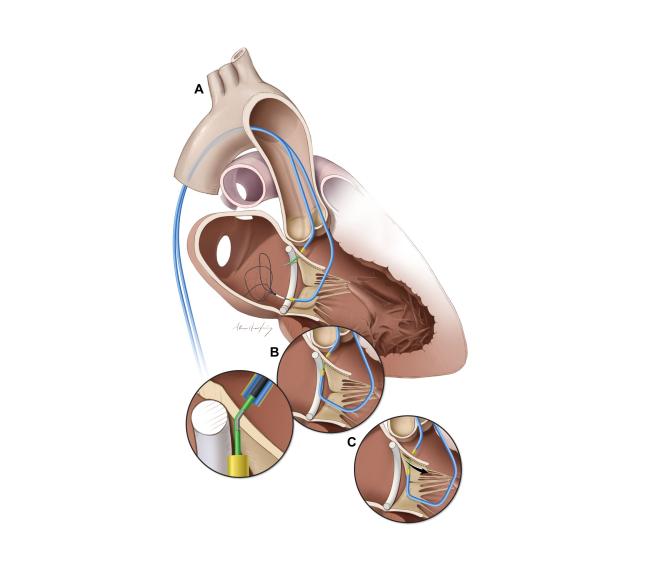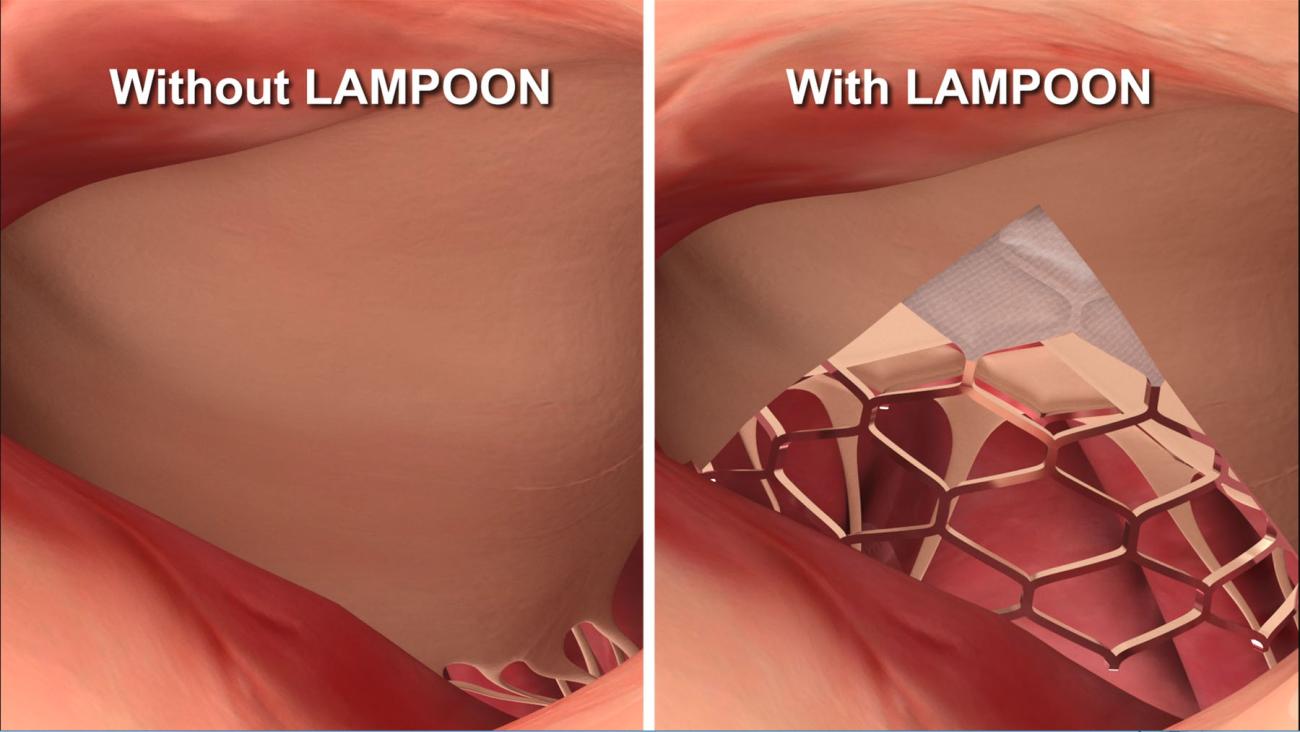Novel technique reduces obstruction risk in heart valve replacement
Monday, May 20, 2019
Novel technique reduces obstruction risk in heart valve replacement

Researchers at the National, Heart, Lung, and Blood Institute (NHLBI), part of the National Institutes of Health, have developed a novel technique that prevents the obstruction of blood flow, a common fatal complication of transcatheter mitral valve replacement (TMVR). The new method, called LAMPOON, may increase treatment options for high-risk patients previously ineligible for heart valve procedures. The Journal of the American College of Cardiology published the findings online on May 20.
TMVR is used to treat mitral valve stenosis, a narrowing of the valve that restricts blood flow into the main pumping chamber of the heart. It also treats regurgitation, which occurs when the valve leaks and causes blood to flow back through the valve. Untreated, these conditions can cause pulmonary hypertension, heart enlargement, atrial fibrillation, blood clots, and heart failure.
For elderly or frail patients, TMVR offers a less invasive alternative to open heart surgery. During TMVR, doctors replace the mitral valve by delivering an artificial valve through a long, thin, flexible tube, called a catheter, through blood vessels and into the heart. But in more than 50 percent of patients, the heart’s anatomy gets in the way. The heart leaflet is pushed back and blocks blood flow. This is known as left ventricular outflow tract (LVOT) obstruction, a common and the most life-threatening complication of TMVR.

“These patients have a failing mitral valve, are not able to undergo open heart surgery, and are now rejected as candidates for TMVR because of the very high risk of left ventricular outflow tract obstruction,” said study author Jaffar M. Khan, M.D., clinician at NHLBI.
To increase the availability of TMVR for this subset of patients, Khan and colleagues at NHLBI and Emory University developed a procedure that makes an intentional laceration of the anterior mitral leaflet to prevent left ventricular outflow tract obstruction, dubbed LAMPOON.
In the LAMPOON procedure, the operator inserts two catheters through the patient’s groin, and then through the blood vessels until it reaches the heart. The doctor then uses an electrified wire the size of a sewing thread woven through the catheter to split open the leaflet. At that point, the patient is ready to undergo TMVR.
“Surgeons cut out the leaflets when they replace valves. They can do it, because they have cut open the chest and the heart and can clearly see the problem. LAMPOON is designed for patients who need a new mitral valve, but can’t, or may not want to undergo open heart surgery,” said Khan.
According to the researchers, other preventive strategies have had largely suboptimal outcomes.
Between June 2017 and June 2018, the LAMPOON study enrolled 30 patients, median age 76, considered at high risk for surgical valve replacement and at prohibitive risk of LVOT obstruction during TMVR.
All patients survived the procedure and 93 percent reached the 30-day survival mark, which compares favorably to a 38 percent reported with other methods. The primary outcome of the study, which combined a successful LAMPOON, followed by a successful TMVR without reintervention, was achieved in 73 percent of the patients.
The researchers hope the technique will eventually help reduce the number of deaths from heart valve disease. Every year, approximately five million people in the United States are diagnosed with heart valve disease, and more than 20,000 Americans die of the disease each year, according to the American Heart Association.
About the National Heart, Lung, and Blood Institute (NHLBI): NHLBI is the global leader in conducting and supporting research in heart, lung, and blood diseases and sleep disorders that advances scientific knowledge, improves public health, and saves lives. For more information, visit https://www.nhlbi.nih.gov.
About the National Institutes of Health (NIH): NIH, the nation's medical research agency, includes 27 Institutes and Centers and is a component of the U.S. Department of Health and Human Services. NIH is the primary federal agency conducting and supporting basic, clinical, and translational medical research, and is investigating the causes, treatments, and cures for both common and rare diseases. For more information about NIH and its programs, visit www.nih.gov.
NIH…Turning Discovery Into Health®
J. M. Khan et al. LAMPOON to prevent LVOT Obstruction during Transcatheter Mitral Valve Replacement (TMVR): Prospective Multicenter Trial Results. JACC. May 20, 2019. DOI: 10.1016/j.jacc.2019.02.076
NHLBI DIR LAMPOON Study: Intentional Laceration of the Anterior Mitral Leaflet to Prevent Left Ventricular Outflow Tract Obstruction During Transcatheter Mitral Valve Implantation https://clinicaltrials.gov/ct2/show/NCT03015194
Institute/Center
Contact
NHLBI Engagement and Media Relations Branch
301-496-5449


